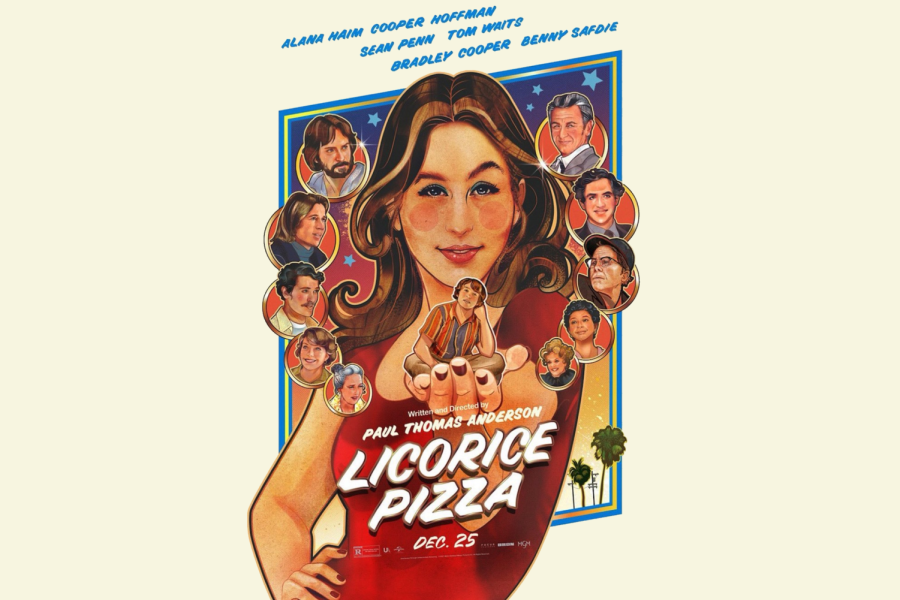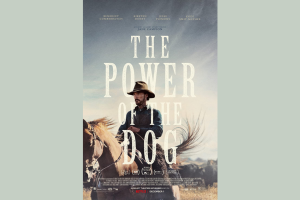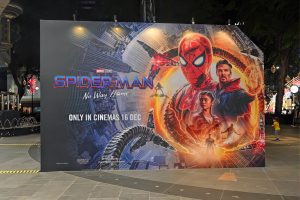The Real-Life Magic of ‘Licorice Pizza’
Paul Thomas Anderson’s new film might be the first documented case of time travel
UNITED ARTISTS RELEASING
“Licorice Pizza” is a refreshingly grounded and relatable story that serves as a love letter to California and the ’70s.
December 29, 2021
Warning: Contains spoilers for “Licorice Pizza.”
Paul Thomas Anderson’s new coming-of-age film, “Licorice Pizza,” explores love, fame and youth against the backdrop of the 1970s San Fernando Valley.
While the trailer caught my attention due to its use of “Life on Mars?” by David Bowie, I knew almost nothing about the film going into it. Anderson’s masterful filmmaking immediately drew me into the world of the San Fernando Valley in 1973. The immersive film stars Alana Haim, one-third of the Grammy-nominated rock band Haim, and Cooper Hoffman, son of Anderson’s long-time collaborator, the late Philip Seymour Hoffman. Anderson effortlessly captures the feeling of a first romance, featuring numerous shots of Haim and Hoffman running through the streets.
“Licorice Pizza” serves as both Haim’s and Hoffman’s feature-film debut. In fact, this is Hoffman’s first acting credit in general; Haim, on the other hand, has been credited in several music videos. The two actors bring a levity and genuine youthfulness to their respective characters, Alana, a 25-year-old yearbook photographer, and Gary, a 15-year-old child actor. Alana’s indecisiveness perfectly contrasts Gary’s ambition and charm, each embodying familiar elements of youth.
For better or worse, the time period and setting drive “Licorice Pizza” from start to finish.
The setting of ’70s California infuses every frame of the film; even the title, Licorice Pizza, references a popular Glendale-based chain of record stores from the 1960s and 1970s. Filmed in the San Fernando Valley, Anderson constructed pinball arcades, political offices and gas stations for the performers to play in, creating a sense of immersion that is uncommon in most modern films.
While the story centers around Alana and Gary, a stellar supporting cast rotates throughout the film, appearing in just one or two scenes each. Bradley Cooper and Sean Penn appear as Jon Peters (the real-life partner of Barbra Streisand, who is mentioned in the film) and William Holden, respectively. These are two celebrities who act as a contrast to Alana and Gary’s optimism and youthfulness. Both Jon and William make sexual advances toward Alana during the film, referencing the negative sides of Hollywood stardom for young women.
Also appearing in the film are Christine Ebersole as a fictionalized version of Lucille Ball, Benny Safdie as a closeted mayoral candidate and John Michael Higgins as a racist businessman. Higgins’ performance has faced criticism online due to his periodic use of a fake Asian accent, which Anderson defended, stating, “you have to be honest to that time.”
For better or worse, the time period and setting drive “Licorice Pizza” from start to finish. Gary’s perennial entrepreneurship, in which he involves Alana, leads him to start businesses ranging from a pinball arcade to a phone-order waterbed company — at one point, a character tells Gary that waterbeds will soon be in every home across America, which got a round of laughs from the audience.
Overall, “Licorice Pizza” is a fun, visually-stunning embodiment of falling in love as a young adult. Due to their age gap, Alana and Gary’s relationship is explicitly non-sexual — though not for lack of trying on Gary’s part. Throughout the film, Alana repeatedly rebuffs Gary’s romantic advances due to his age. Therefore, the entire runtime is dedicated to building their emotional connection, which Haim and Hoffman portray perfectly.
At the end of the film, Alana and Gary finally kiss. This provides an emotional payoff for the slow burn throughout the film, adhering to the coming-of-age format that Anderson is clearly paying homage to. I felt the kiss could have been omitted and was slightly uncomfortable due to the emphasis on their age gap throughout the film.
At a time when larger-than-life superhero films reign supreme — the top four movies of the year are “Spider-Man: No Way Home, ” “Shang-Chi and the Legend of the Ten Rings,” “Venom: Let There Be Carnage” and “Black Widow” — “Licorice Pizza” is a refreshingly grounded and relatable story that serves as a love letter to California and the ’70s — as well as love itself.

















paul wong • Feb 19, 2022 at 8:22 pm
When they kissed, the boy has reached 18.